ecology
Table of Contents
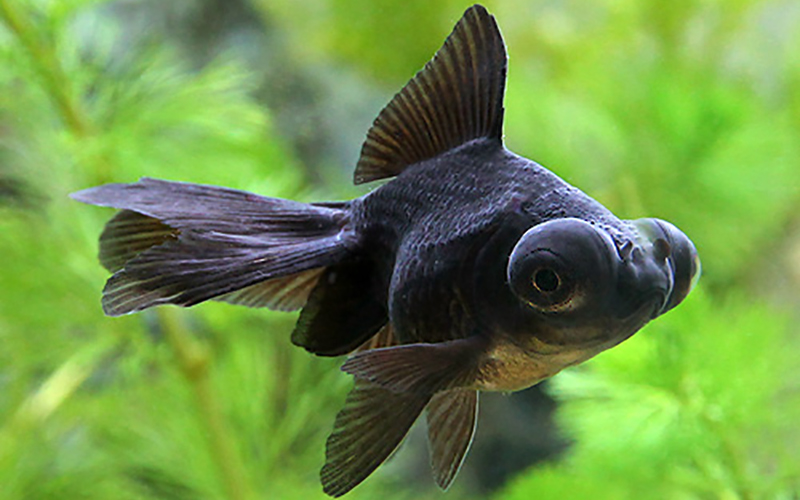
As you can guess from its name, the deme-kin is a type of goldfish with its left and right eyes popping out of its head. It is one of the most well-known goldfish because of its striking appearance.The characteristic eyes do not appear immediately after hatching. The eyes gradually appear about 3 months after hatching. The body features are similar to those of the Ryukin. There was a time when the dekomekin was called shina kinyo (shina goldfish). The word "shina" refers to a part of China. In other words, it was called shina-kinyo in the sense that it was a goldfish from China. Recently, however, the name has changed to dekomegane because of its appearance and ease of calling.
Dezumegane is,The Akaidekamegane was born in China as a mutation of Ryukin, although its age is unknown. Therefore, its body features are similar to Ryukin's. It is said to have come to Japan from China around the middle of the Meiji period. It is said to have come to Japan from China around the middle of the Meiji period (1868-1912), but it is also said that it was introduced from China during the Edo period (1603-1868).In ancient China, goldfish were sometimes presented as gifts to emperors and other dignitaries. Rare goldfish were created to catch the emperor's eye. One of them was the dekomegane. Other varieties produced during that period included the apex-eyed and blister-eyed goldfish.
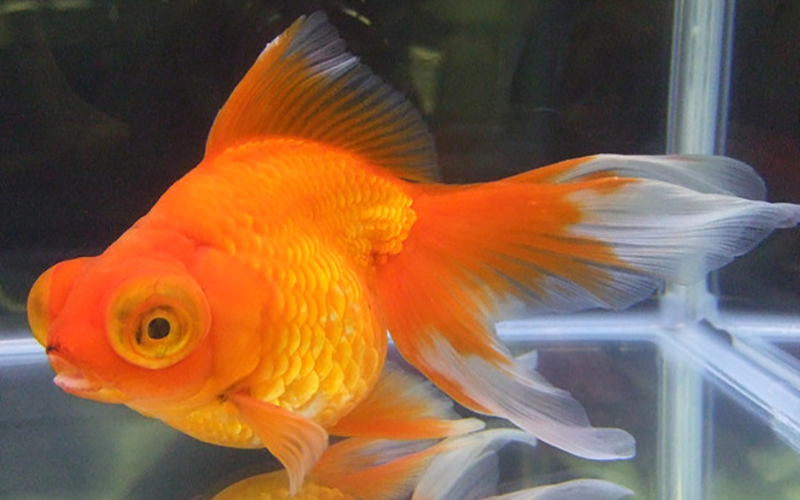
Red was the first color to be produced in the dekomegane.Since the dekomekin is a goldfish produced by mutation from the Ryukin, it inherited the color of the Ryukin and was initially a red dekomekin.

Black is the most well-known color among the dekomegane.Most dekomegins seen in goldfish scoopers and stores are black dekomegins. Therefore, many people think that dekomegins are black goldfish.

Sanshoku (calico) is one of the least visible colors of dekomekin.Unlike black and red, tri-colored dimegane is a mosaic of transparent scales mixed with normal and transparent scales, so colors such as red, blue, yellow, purple, and black create complex patterns. Sanshoku dimegane is the result of a mutation of red dimegane. From the Tricolor dekomekin, the Tanishiki, Shubunkin, Calico Ryukin, and other goldfish of the Tricolor (Calico) lineage have been produced. Therefore, the importance of what the Sanshoku Dimekin has achieved in the history of goldfish breeding is very high.
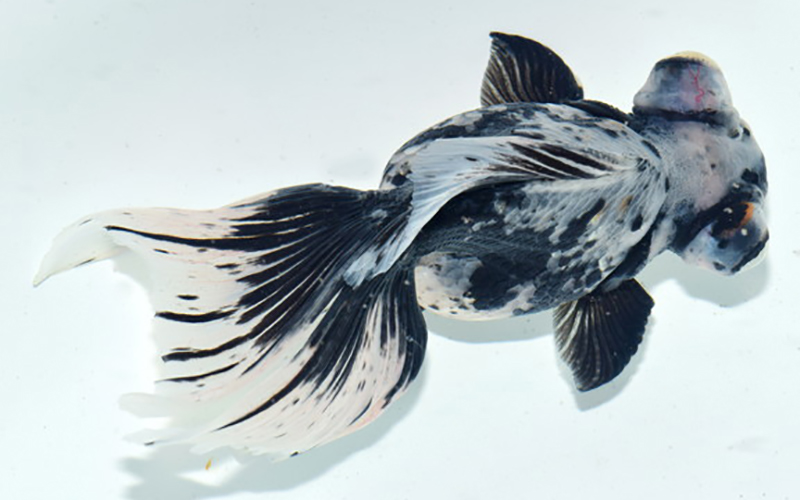
Panda dekomekin is the name given to dekomekin that have only black and white body colors.Unlike the three body colors described above, panda dekomekin are mostly sold as panda dekomekin in stores. In most cases, the tail fins of the panda de megane are butterfly tails.
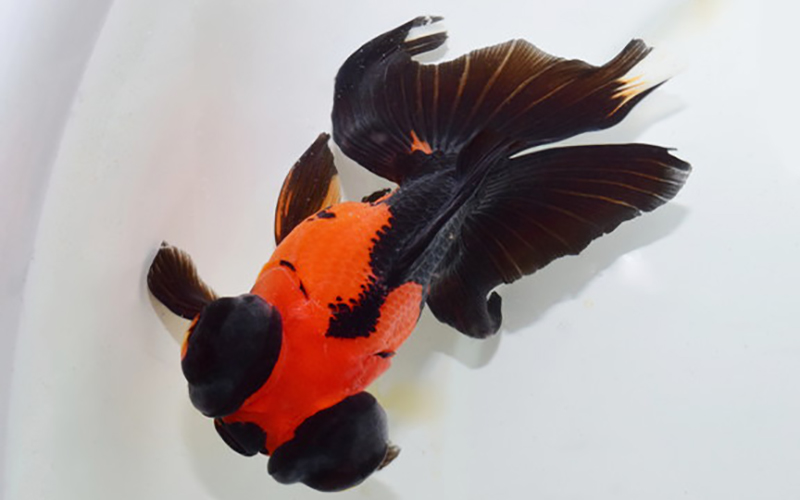
The red panda dekomekin is called dekomekin with two body colors, red and black, while the panda dekomekin has two colors, white and black.Other than the body color, it is almost the same as the panda dekomegane.

The best way to enjoy the dekomegane is to look at its distinctive eyes, which protrude to the left and right. For this reason, we recommend viewing it from above in a bowl or other container (top view) rather than from the side (side view) in an aquarium or other container.By viewing it from the top, you can see whether the left and right eyes are equally protruding and enjoy the size of the eyes in relation to the body as a whole. When viewed from the side, you can appreciate the unique cuteness of the dekomegane and the size of its eyes.
When mixing goldfish with other goldfish and other species, there is sometimes uncertainty as to what species is good and what species is not. First,There is no general prohibition against this or that when mixing goldfish with other species.Therefore, depending on the personality and environment of the goldfish you keep, even species that are said to be bad for each other may get along well with each other. However, there is also the matter of compatibility between goldfish. If you put incompatible goldfish together, there is a high possibility that they will fight or that only one of them will monopolize the food. However, as explained in the beginning, there is no prohibition for goldfish, so if you want to mix them, it may be OK to do so. Now, let us explain the goldfish that are compatible and incompatible with the Dekomegane.
The goldfish that are most compatible with the Demekin are Ryukin-type goldfish such as the Ryukin and Calico Ryukin.Ryukin-type goldfish are characterized by their tail fins, so it is a pleasure to mix various species and compare their tail fins.
Goldfish that are incompatible with the dekomegane are Japanese goldfish of the wagane type, such as the wakin and comet.Many Japanese goldfish are agile and grow large in a short period of time. If they are mixed with Japanese goldfish, please be aware that the dekomegane may be eaten by other Japanese goldfish, and the difference in body size may cause them to move apart.
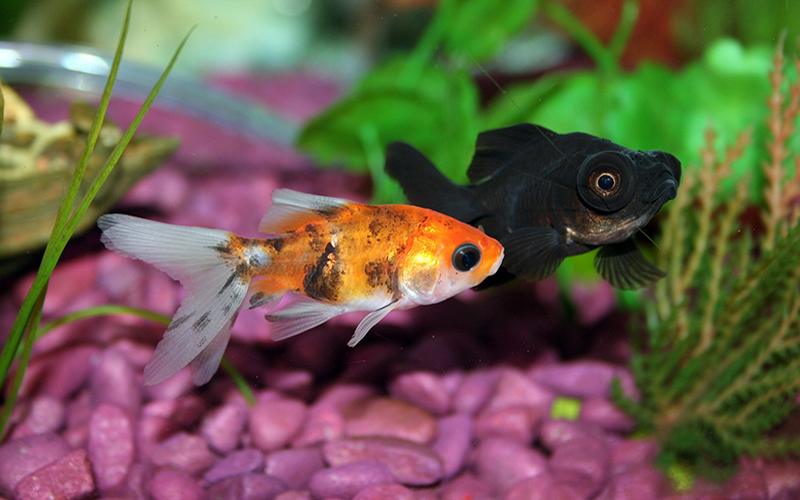
Dezumegane is,The most important thing to keep in mind when keeping them is how to protect their distinctive protruding eyes. The protruding eyes are so delicate that they can be damaged if they are rubbed against the corners of decorations in the aquarium. The most common cause of accidents is when the eyes get caught in the netting during a water change, or in the worst case, when the eyes are removed from the aquarium.Therefore, please be careful when handling dekome-kin. As mentioned in the above section, it is best to keep dekome-kin by mixing them with Ryukin-type goldfish,For goldfish with distinct visual characteristics, such as Domekane, Tingtengan, and Suibokugan, it is recommended to keep one type or three types (Domekane, Tingtengan, and Suibokugan).As mentioned at the beginning of the above section, there is no prohibition against this or that variety of goldfish, but some goldfish may be easily pestered depending on the individual. The three types of goldfish (Dameshikin, Tatemekin, and Suibangen) are especially distinctive in appearance, so there is a risk that they will be poked around with. For example, in the case of the dekomegane, other goldfish may poke at the eyes because they are amused by the protruding eyes, which can damage the eyes, or worse, blind them. We recommend keeping them separate to prevent this from happening. However, not 100 people can keep Damegins in a separate tank, so if you keep them mixed with other varieties of goldfish, please check frequently to make sure that they are not being messed with.
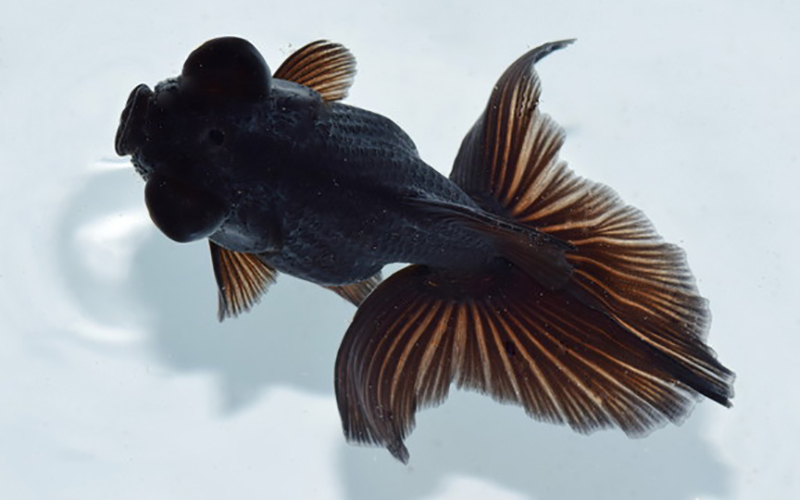
The body shape is the same as that of the dekomegane, but there is a goldfish called the butterfly-tailed dekomegane that has a tail fin (butterfly tail) that looks like a swallowtail butterfly with its wings spread.More information on the characteristics of the butterfly-tailed demoiselle and how to keep it is provided in the detailed pages below.